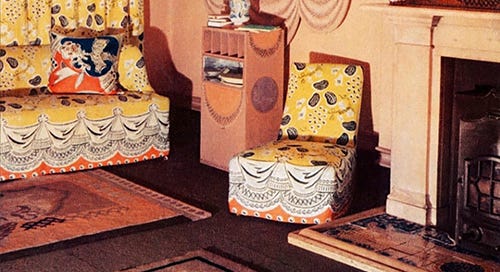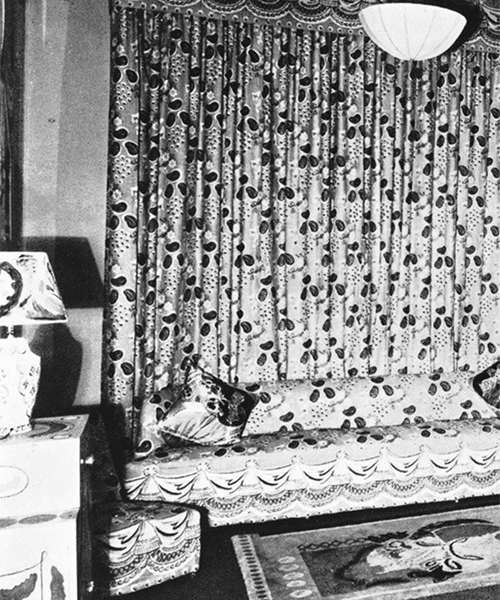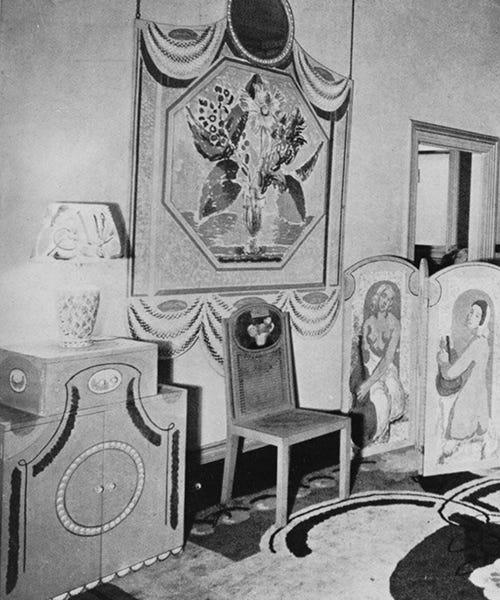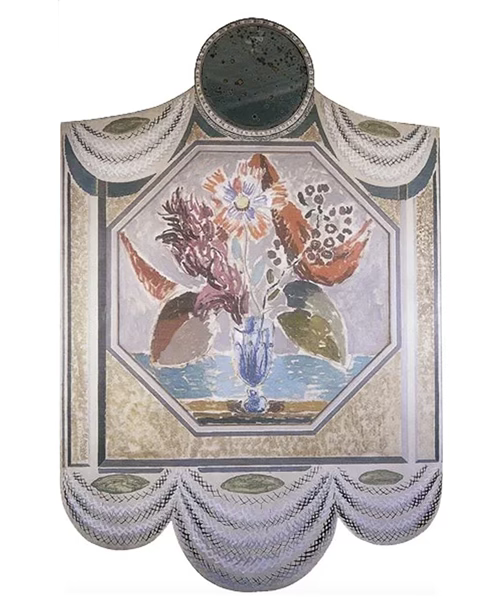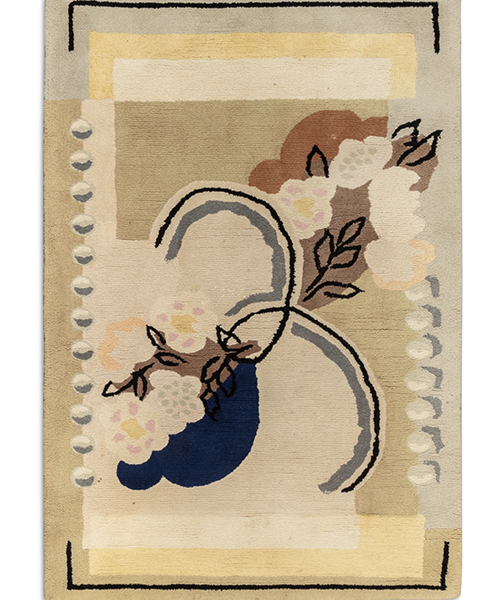
In 1932, Duncan Grant and Vanessa Bell showcased their work titled Music Room at the Alex Reid and Lefevre Gallery. Their designs received significant attention in the press. Renowned writer and critic Cyril Connolly described the opening party, which was funded by Virginia Woolf, by stating,
"The two painters have swooped away from the defeatist, the rather triste good taste of their younger imitators, from tea caddies, from quiet tiles and discreet sherds, and joined to their natural grace and measure a riotous sense of colour, a romantic splendour which was the one element lacking to their former distinction. At the inauguration, the room vibrated to a Debussy solo on the harp, and the music, with its seasonal elegiac, seemed to blend with the surrounding patterns of flowers and falling leaves in a rare union of intellect and imagination, colour and sound, which produced in the listener a momentary apprehension of the life of the spirit, that lovely and un-English credo."
The theme of the room was Autumn, with the walls adorned by six flower panels measuring 7 feet by 5 feet, each incorporating a mirror into its design. The decor included rugs, curtains, and needlework panels for the chairs, along with lamps and cushions. A screen created by Bell depicted music-making nudes, which Woolf later acquired. Bell also designed the woven rugs.

A corner of the room features a panel by Grant, and below sits a chair adorned with a needlework panel. On the right is an allegorical screen by Bell. On the left, a painted pine cabinet cleverly conceals the gramophone, with the lower half designed for storing records. It is decorated in beige and blue, along with a tangerine colour that ties the room together. The carpet showcases an expanse of flowers and leaves in shades of grey, brown, and blue. The piano, designed by Grant, is painted in blue, yellow, green, madder, oyster white, and battleship grey, reflecting a motif of leaves. Next to it is a duet stool, also created by Grant, with panels by Bell and Grant hanging on either side of the central one. He additionally designed a grey and canary yellow printed linen fabric, Grapes, for Allan Walton Textiles.

The full article by Cyril Connolly:
"The music room decorated, furnished, and painted by Vanessa Bell and Duncan Grant recently at the Lefevre Galleries, besides being the high-spot of the end of last year, marks also a climax in the work of these artists.
The two painters have swooped away from the defeatist, the rather triste good taste of their younger imitators, from tea caddies, from quiet tiles and discreet sherds, and joined to their natural grace and measure a riotous sense of colour, a romantic splendour which was the one element lacking to their former distinction.
Unfortunately, they could not design the room itself, and one must imagine the six huge panels decorating the long gallery of one of our remaining merchant princes. The whole suggests a great canvas of Autumn: not the usual drooling sickbed of the countryside, but those conjunctions of sun and wind that suddenly illuminate gardens and beech woods.
At the inauguration, the room vibrated to a Debussy solo on the harp, and the music, with its seasonal elegiac, seemed to blend with the surrounding patterns of flowers and falling leaves in a rare union of intellect and imagination, colour and sound, which produced in the listener a momentary apprehension of the life of the spirit, that lovely and un-English credo.
The whole is a fine sight for the connoisseur who enjoys discriminating between the work of the two painters, one so much better than the other, down to the lover of beauty, whose love is now so consistently unrequited.”
Keep reading with a 7-day free trial
Subscribe to Angela Rose Design to keep reading this post and get 7 days of free access to the full post archives.


